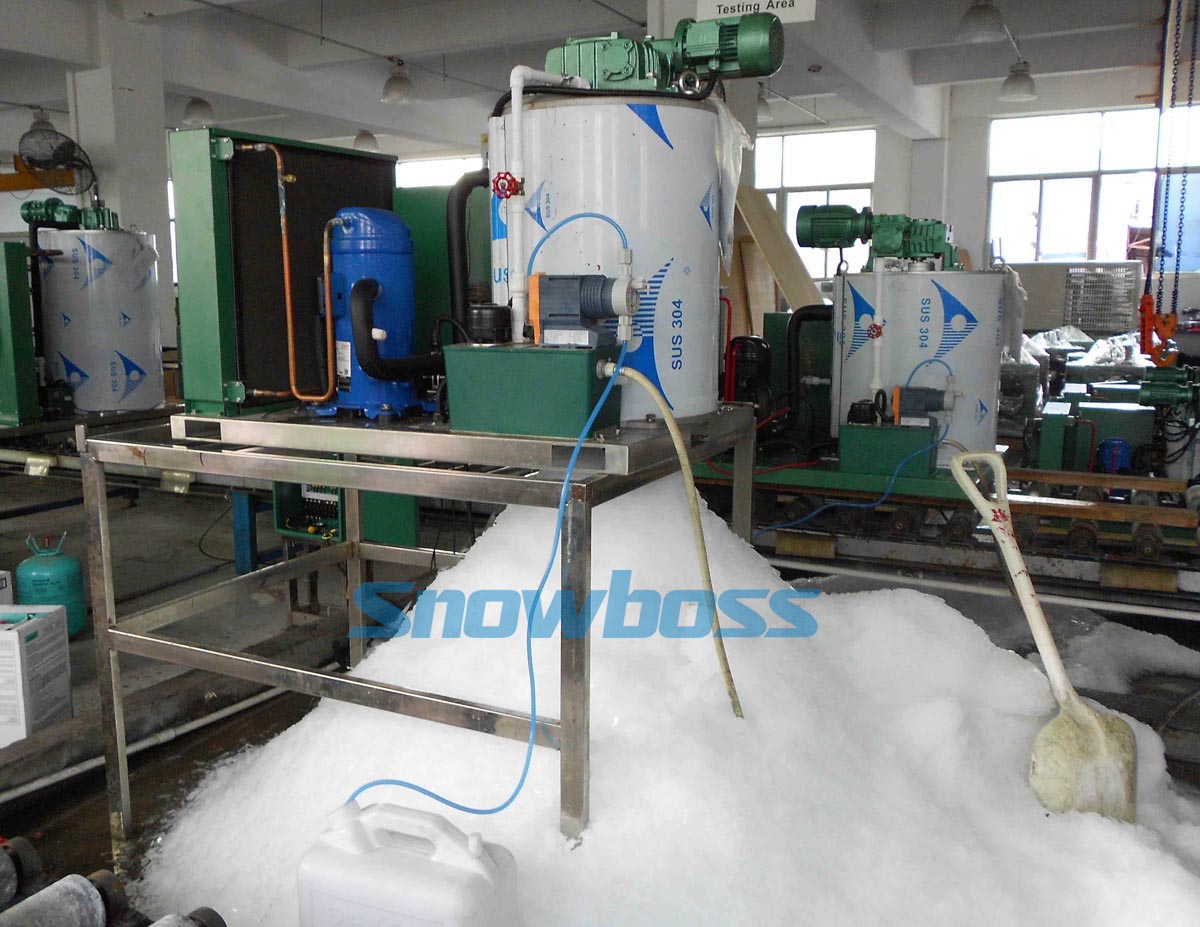What is ice machine?
Using refrigeration system, the water temperature is lowered to below 0 ℃, the water frozen into ice.
Refrigeration Theory
All refrigeration equipments are made of four key components; the evaporator, the condenser, the compressor and the throttle valve. All of refrigeration equipment works the same way. The function of compressor is to compress low pressure refrigerant gas to high pressure gas, and deliver it to the condenser. Here, the high pressure gas is condensed into high pressure liquid, and drained out through the throttle valve to become low pressure liquid. At this point, the liquid is conducted to the evaporator where heat exchanging occurs, after that, the low pressure gas is pumped back to compressor to start the next cycle. This is one complete refrigeration working cycle.

Operation of ice machine
The ice making machine produces ice from water fed through an exterior water source. The water is pumped into the ice making machines and pours water over the ice generator, also calls ice evaporator, from which the water has an indirect heat exchange with gas. When the energy of water is taken away by hot gas, the water becomes into solid ice.
Because of different utilization of ice and different shape of ice evaporator. The ice can be made into shape of flake, cylindrical tube, solid square ice, rectangular brick block, and other shapes as well. There are mostly three types of cooling systems, water-cooled, air-cooled and water-air combined cooling system (evaporative cooling). In most commercial refrigeration system, water-cooled and air-cooled are the most commonly adopted system. The ice machines defrost the ice from ice generator by a heating process. The ice is then dumped into an ice receiver bin for easy access. A drain in the ice storage bin removes water away from standing ice.

